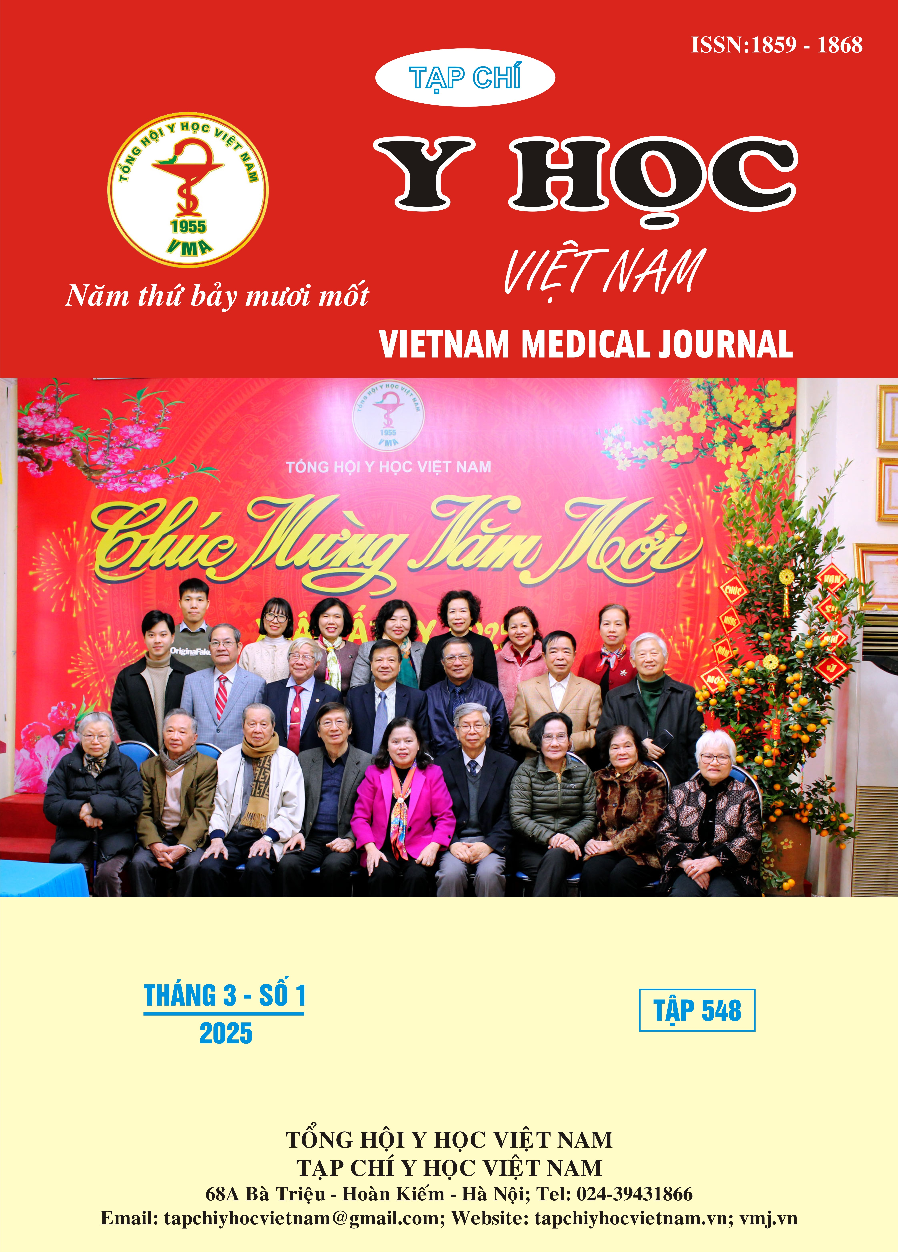CHẤT LƯỢNG HÌNH ẢNH CỦA CẮT LỚP VI TÍNH LIỀU THẤP TRONG THEO DÕI CÁC BỆNH NHÂN CHẤN THƯƠNG SỌ NÃO
Nội dung chính của bài viết
Tóm tắt
Mục tiêu: đánh giá chất lượng hình ảnh trên cắt lớp vi tính liều thấp (LDCT) trong theo dõi chấn thương sọ não (CTSN). Đối tượng và phương pháp: nghiên cứu mô tả so sánh 36 bệnh nhân (BN) đang điều trị CTSN được chụp LDCT sọ não để theo dõi với tham số 80kV và so sánh chụp liều tiêu chuẩn (SDCT) với 130kV khi vào viện tại Bệnh viện Việt Đức từ tháng 3/2024 đến tháng 10/2024. Liều chiếu của các BN được thu thập qua các thông số chỉ số liều (CTDIvol), liều tích lũy (DLP) và liều hiệu dụng (ED). Chất lượng hình ảnh được so sánh dựa trên qua các tiêu chí như nhiễu, nhiễu ảnh, giải phẫu, não thất, dịch não tủy, đường giữa, phân biệt chất trắng – chất xám, máu tụ, ranh giới máu tụ, dị vật sau mổ bằng cách cho điểm (1- hình ảnh chất lượng tốt, 2- hình ảnh chấp nhận được, 3- không chấp nhận được). Kết quả: CTDIvol trên LDCT giảm 35% so với trên SDCT. DLP và ED giảm 45% trên LDCT so với SDCT. Phần lớn hình ảnh LDCT (97%) được đánh giá là đủ chất lượng chẩn đoán (điểm 1 và 2). Mặt khác, trên 60% BN được đánh giá có chất lượng hình ảnh LDCT tương đương với SDCT. Các tổn thương não như máu tụ, ranh giới máu tụ, dị vật sau mổ có khác biệt không đáng kể về chất lượng hình ảnh. Kết luận: chụp LDCT giảm đáng kể liều chiếu trong khi vẫn đáp ứng được chất lượng hình ảnh để chẩn đoán trong theo dõi các trường hợp đang điều trị CTSN.
Chi tiết bài viết
Từ khóa
CLVT liều thấp, Cắt lớp vi tính, chấn thương sọ não, liều chiếu CT
Tài liệu tham khảo
2. Wu D, Wang G, Bian B, Liu Z, Li D. Benefits of Low-Dose CT Scan of Head for Patients With Intracranial Hemorrhage. Dose-response: a publication of International Hormesis Society. Jan-Mar 2020;19(1):1559325820909778. doi:10.1177/ 1559325820909778
3. Morton RP, Reynolds R, Ramakrishna R, et al. Low-Dose Head Computed Tomography in Children: A Single Institutional Experience in Pediatric Radiation Risk Reduction. Journal of Neurosurgery Pediatrics. 2013;12(4):406-410. doi:10.3171/2013.7.peds12631
4. Apisarnthanarak P, Buranont C, Boonma C, et al. Abdominal CT Radiation Dose Optimization at Siriraj Hospital. The Asean Journal of Radiology. 2020;21(2): 28-43. doi:10.46475/ aseanjr.v21i2.80
5. Hwang JH, Kang JM, Park S, Kim J-H, Choi ST. Comparison Study of Image Quality at Various Radiation Doses for CT Venography Using Advanced Modeled Iterative Reconstruction. PloS one. 2021;16(8):e0256564. doi:10.1371/journal. pone.0256564
6. Lee KH, Shim YS, Park SH, et al. Comparison of standard-dose and half-dose dual-source abdominopelvic CT scans for evaluation of acute abdominal pain. Acta Radiologica. 2019;60(8): 946-954.
7. Ippolito D, Casiraghi AS, Franzesi CT, Fior D, Meloni F, Sironi S. Low-dose computed tomography with 4th-generation iterative reconstruction algorithm in assessment of oncologic patients. World Journal of Gastrointestinal Oncology. 2017;9(10):423.
8. Blasel S. Low Dose CT of the Brain in the Follow-up of Intracranial Hemorrhage. Int J Radiol Imaging Technol. 2016;2(2):1-8.


